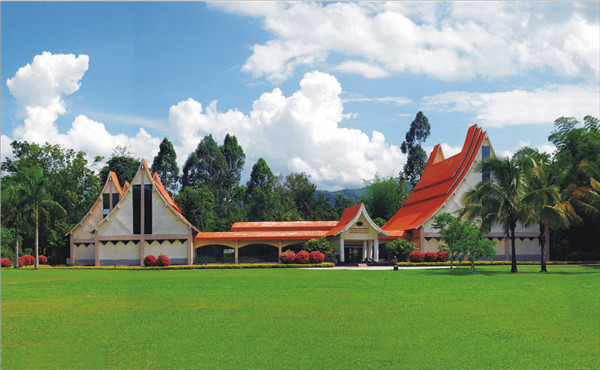Hug the trees
By Chen Liang ( China Daily ) Updated: 2015-07-11 08:15:07
 |
|
Visitors can learn the botanical garden's history in the garden's museum. [Photos Provided To China Daily] |
Local communities
Wang and his team have specially targeted children from the local communities in Xishaungbanna.
"While I started working with XTBG in 2010, I found that many local children hadn't been to our garden or had but just had a quick tour," he says. "They had little knowledge of the region's rich biodiversity and conservation."
So Wang and his colleagues began holding exhibitions and giving lectures to students at Menglun Primary School and trained some of the students to be "young volunteer guides" of the garden. "We trained 10 of them in a session," Wang says. "The children were enthusiastic."
They have given a total of 20 popular science lectures, once a month, in the school since 2010.
"Originally, we wanted to give lectures to students from one class so that we could monitor their changes during the years," Wang said. "But the school teachers thought the chance should be shared by all students."
XTBG has also established a similar relationship with Jinghong Xiaojie Central Primary School, a country school with about 2,000 students, of which more than 70 percent are from different ethnic minority groups, since October 2013.
Botanists from the garden helped the school build a native tree nursery in 2014. Wang and his colleagues helped the school establish a nature club among its students in the fourth grade and regularly gave students lectures on biodiversity conservation. In May, 2015, members of the club were invited to join in XTBG's ecological restoration project - planting 67 species of native trees on a "holy hill" of the Dai ethnic group at Manyangguang village, which is located near the school.
"The nature club has about 30 members, who have more chances to visit the botanical garden, use binoculars and insect collecting equipment provided by the garden and participate in some nature education programs," says Rao Xinming, vice-principal of the school. "The students were so keen to join the club, we had to pick those based on their performance in science courses."
Zhang Xin, an 11-year-old girl of the Hani ethnic group, feels lucky to be a member of the club, because only four other students from her class are in it. She says she enjoys visiting the botanical garden to see dancing grass and all kinds of flowers. "Through activities with our club, I know many animals and birds are going extinct because of hunting," she says.
Her grandfather loves hunting and still goes hunting from time to time, she says. "He will leave in the afternoon and return the next morning. He shoots everything - wild pheasants, cuckoos, hoary bamboo rats, and civet cats. My father and I asked him not to go, but he turned a deaf ear to us. Back home, all Hani families have guns."
In 2014, more than 1,000 students from Xishuangbanna participated in nature education activities, XTBG director Chen Jin points out. A total of 10 nature clubs were established in 10 local schools. "We gave each school five nature observation bags, containing things like binoculars and insect collecting equipment," the professor says. "A bag is worth about 2,000 yuan."
According to Sophie Williams, one of her master students asked pupils in a primary school in Xishuangbanna to draw a forest of their imagination. "Children who are involved with nature education programs drew different species of trees," says the teacher. "Children who weren't involved drew rubber trees. So the understanding of what a forest is, is different. Potentially, we can use nature education to show children that a forest has a lot of species."
|
|
|
|
|
|
|
|

























 Raymond Zhou:
Raymond Zhou: Pauline D Loh:
Pauline D Loh: Hot Pot
Hot Pot Eco China
Eco China China Dream
China Dream China Face
China Face






